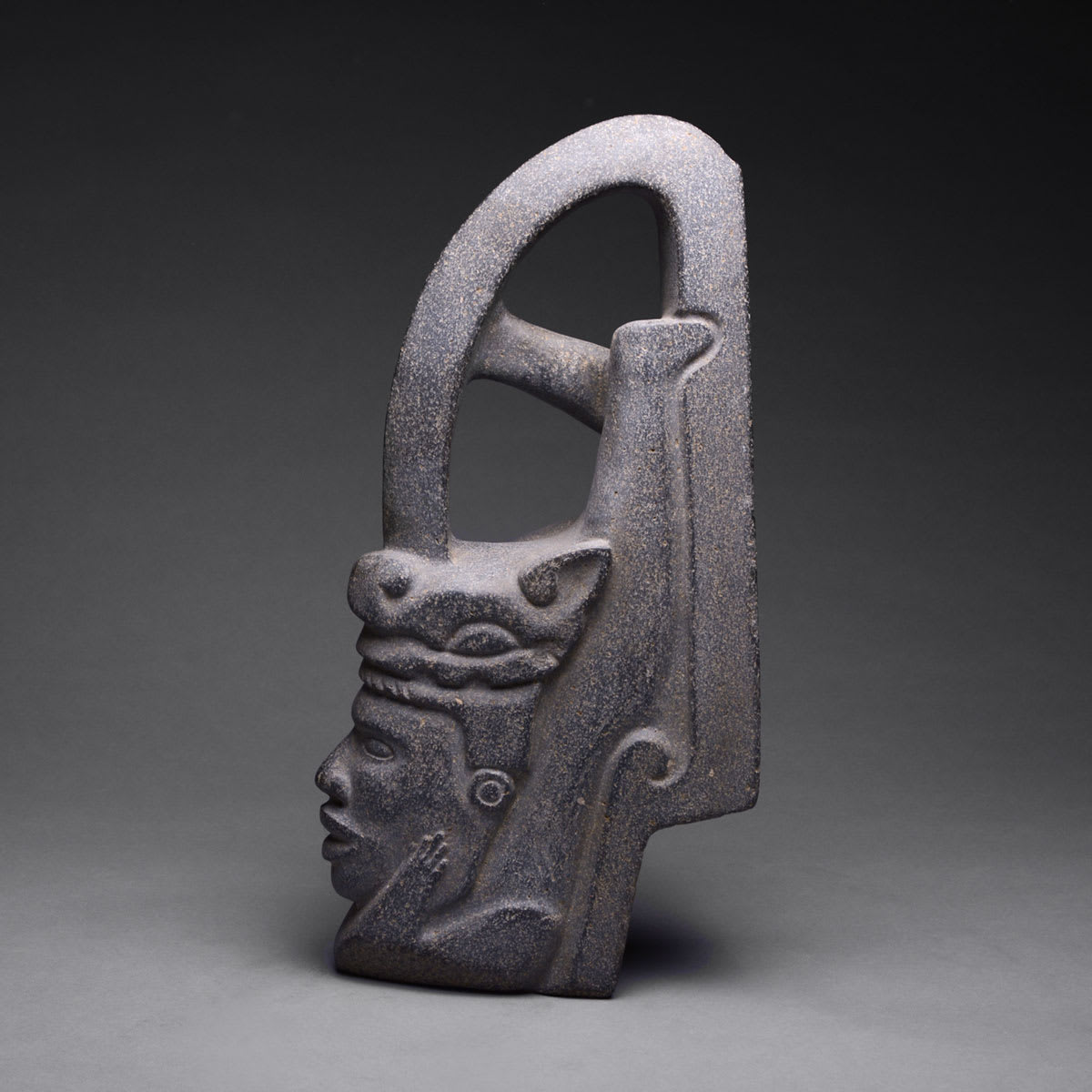Veracruz Stone Hacha in the Form of an Acrobat, 200 AD to 600 AD
stone
33 x 12.7 cm
13 x 5 in
13 x 5 in
PH.0278
Further images
This sculpture depicts a hacha in the form of an acrobat. The hacha is a sculptural element that would have been used in an ancient Mesoamerican ballgame. The ball game,...
This sculpture depicts a hacha in the form of an acrobat. The hacha is a sculptural element that would have been used in an ancient Mesoamerican ballgame. The ball game, perhaps ritually signifying the transit of the sun and moon between the celestial and terrestrial spheres, was an important event in Mesoamerican culture and was considered necessary to maintain the cosmic cycle. The game was both a sport and a sacrificial ritual. Made out of heavy stone, this hacha was probably used as a ritual implement to mimic the lighter leather adornments used in the actual game. In fact, relief sculptures and terracotta figures show axe- shaped objects attached to ball- players’ belts, which were used as deflectors and protectors. The game itself used a large rubber ball that could be hit by the elbows, knees or hips but could not be touched by the hands or feet.
A defining characteristic of the Classic Veracruz culture is the presence of stone ballgame gear, such as this hacha. These hachas would have been attached to yolkes, another element of the ballgame equipment. Popular imagery in hachas are human heads, which are suggested to be associated with decapitation rituals associated with the ballgame. Although images of figurative heads are common in hachas, they can also depict a wide array of subject matter.
A defining characteristic of the Classic Veracruz culture is the presence of stone ballgame gear, such as this hacha. These hachas would have been attached to yolkes, another element of the ballgame equipment. Popular imagery in hachas are human heads, which are suggested to be associated with decapitation rituals associated with the ballgame. Although images of figurative heads are common in hachas, they can also depict a wide array of subject matter.
19
of
19







